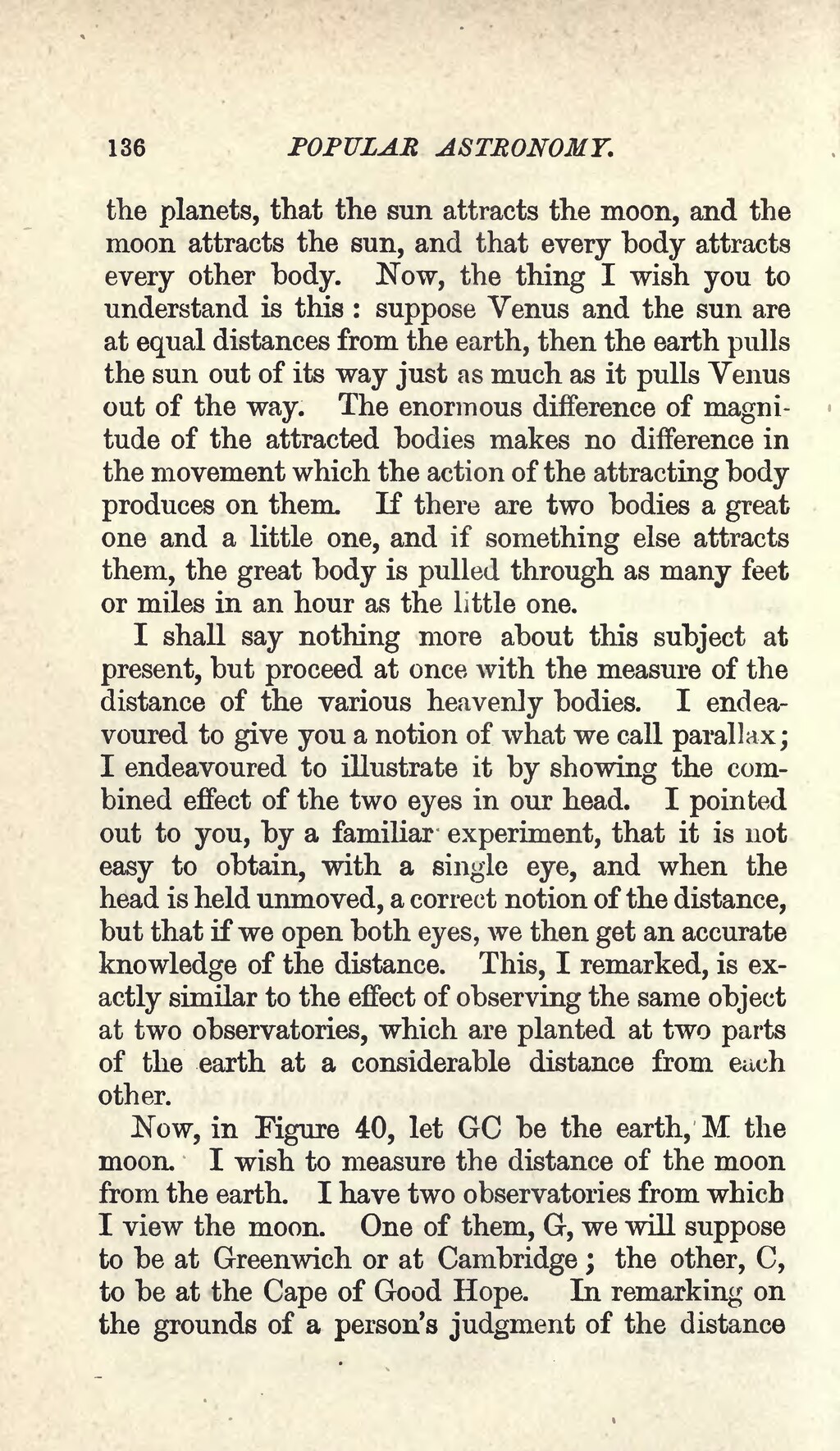the planets, that the sun attracts the moon, and the moon attracts the sun, and that every body attracts every other body. Now, the thing I wish you to understand is this: suppose Venus and the sun are at equal distances from the earth, then the earth pulls the sun out of its way just as much as it pulls Venus out of the way. The enormous difference of magnitude of the attracted bodies makes no difference in the movement which the action of the attracting body produces on them. If there are two bodies a great one and a little one, and if something else attracts them, the great body is pulled through as many feet or miles in an hour as the little one.
I shall say nothing more about this subject at present, but proceed at once with the measure of the distance of the various heavenly bodies. I endeavoured to give you a notion of what we call parallax; I endeavoured to illustrate it by showing the combined effect of the two eyes in our head. I pointed out to you, by a familiar experiment, that it is not easy to obtain, with a single eye, and when the head is held unmoved, a correct notion of the distance, but that if we open both eyes, we then get an accurate knowledge of the distance. This, I remarked, is exactly similar to the effect of observing the same object at two observatories, which are planted at two parts of the earth at a considerable distance from each other.
Now, in Figure 40, let GC be the earth, M the moon. I wish to measure the distance of the moon from the earth. I have two observatories from which I view the moon. One of them, G, we will suppose to be at Greenwich or at Cambridge; the other, C, to be at the Cape of Good Hope. In remarking on the grounds of a person's judgment of the distance
